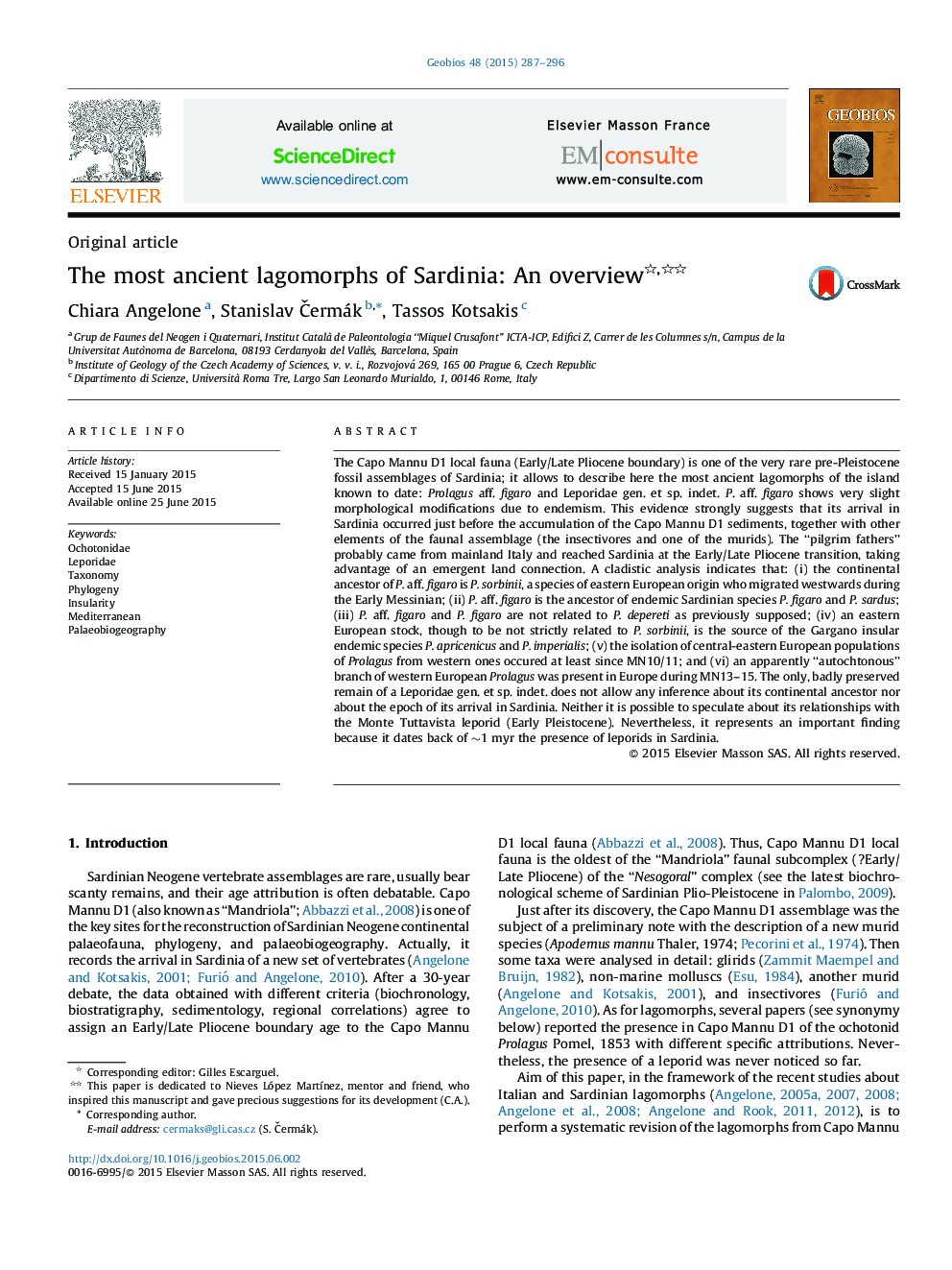| کد مقاله | کد نشریه | سال انتشار | مقاله انگلیسی | نسخه تمام متن |
|---|---|---|---|---|
| 4748026 | 1360074 | 2015 | 10 صفحه PDF | دانلود رایگان |
The Capo Mannu D1 local fauna (Early/Late Pliocene boundary) is one of the very rare pre-Pleistocene fossil assemblages of Sardinia; it allows to describe here the most ancient lagomorphs of the island known to date: Prolagus aff. figaro and Leporidae gen. et sp. indet. P. aff. figaro shows very slight morphological modifications due to endemism. This evidence strongly suggests that its arrival in Sardinia occurred just before the accumulation of the Capo Mannu D1 sediments, together with other elements of the faunal assemblage (the insectivores and one of the murids). The “pilgrim fathers” probably came from mainland Italy and reached Sardinia at the Early/Late Pliocene transition, taking advantage of an emergent land connection. A cladistic analysis indicates that: (i) the continental ancestor of P. aff. figaro is P. sorbinii, a species of eastern European origin who migrated westwards during the Early Messinian; (ii) P. aff. figaro is the ancestor of endemic Sardinian species P. figaro and P. sardus; (iii) P. aff. figaro and P. figaro are not related to P. depereti as previously supposed; (iv) an eastern European stock, though to be not strictly related to P. sorbinii, is the source of the Gargano insular endemic species P. apricenicus and P. imperialis; (v) the isolation of central-eastern European populations of Prolagus from western ones occured at least since MN10/11; and (vi) an apparently “autochtonous” branch of western European Prolagus was present in Europe during MN13–15. The only, badly preserved remain of a Leporidae gen. et sp. indet. does not allow any inference about its continental ancestor nor about the epoch of its arrival in Sardinia. Neither it is possible to speculate about its relationships with the Monte Tuttavista leporid (Early Pleistocene). Nevertheless, it represents an important finding because it dates back of ∼1 myr the presence of leporids in Sardinia.
Journal: Geobios - Volume 48, Issue 4, July–September 2015, Pages 287–296
